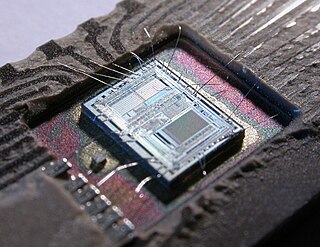
A microcontroller or microcontroller unit (MCU) is a small computer on a single integrated circuit. A microcontroller contains one or more CPUs along with memory and programmable input/output peripherals. Program memory in the form of NOR flash, OTP ROM, or ferroelectric RAM is also often included on the chip, as well as a small amount of RAM. Microcontrollers are designed for embedded applications, in contrast to the microprocessors used in personal computers or other general-purpose applications consisting of various discrete chips.

FreeRTOS is a real-time operating system kernel for embedded devices that has been ported to 40 microcontroller platforms. It is distributed under the MIT License.
ThreadX is a highly deterministic, embedded real-time operating system (RTOS) programmed mostly in the language C. It was originally released in 1997 as ThreadX when Express Logic first developed it, later it was renamed to Azure RTOS (2019) after Express Logic was purchased by Microsoft, then most recently it was renamed again to Eclipse ThreadX (2023), or "ThreadX" in its short form, after it transitioned to free open source model under the stewardship of the Eclipse Foundation.
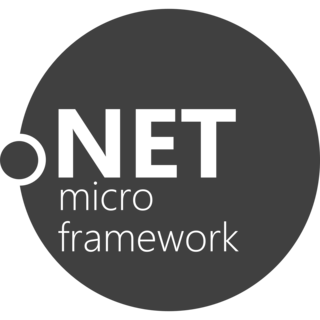
The .NET Micro Framework (NETMF) is a .NET Framework platform for resource-constrained devices with at least 512 kB of flash and 256 kB of random-access memory (RAM). It includes a small version of the .NET Common Language Runtime (CLR) and supports development in C#, Visual Basic .NET, and debugging using Microsoft Visual Studio. NETMF features a subset of the .NET base class libraries, an implementation of Windows Communication Foundation (WCF), a GUI framework loosely based on Windows Presentation Foundation (WPF), and a Web Services stack based on Simple Object Access Protocol (SOAP) and Web Services Description Language (WSDL). NETMF also features added libraries specific to embedded applications. It is free and open-source software released under Apache License 2.0.
A Bluetooth stack is software that is an implementation of the Bluetooth protocol stack.

Code Composer Studio is an integrated development environment for developing applications for Texas Instruments embedded processors.
Redis is a source-available, in-memory storage, used as a distributed, in-memory key–value database, cache and message broker, with optional durability. Because it holds all data in memory and because of its design, Redis offers low-latency reads and writes, making it particularly suitable for use cases that require a cache. Redis is the most popular NoSQL database, and one of the most popular databases overall. Redis is used in companies like Twitter, Airbnb, Tinder, Yahoo, Adobe, Hulu, Amazon and OpenAI.
Mbed is a development platform and operating system for internet-connected devices based on 32-bit ARM Cortex-M microcontrollers. The project was a collaboratively developed by Arm and its technology partners. As of July 2024 Mbed is no longer actively developed by Arm.

OpenShift is a family of containerization software products developed by Red Hat. Its flagship product is the OpenShift Container Platform — a hybrid cloud platform as a service built around Linux containers orchestrated and managed by Kubernetes on a foundation of Red Hat Enterprise Linux. The family's other products provide this platform through different environments: OKD serves as the community-driven upstream, Several deployment methods are available including self-managed, cloud native under ROSA, ARO and RHOIC on AWS, Azure, and IBM Cloud respectively, OpenShift Online as software as a service, and OpenShift Dedicated as a managed service.
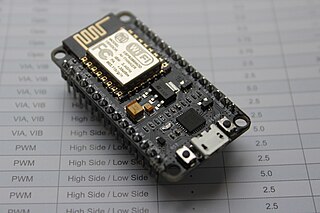
NodeMCU is a low-cost open source IoT platform. It initially included firmware which runs on the ESP8266 Wi-Fi SoC from Espressif Systems, and hardware which was based on the ESP-12 module. Later, support for the ESP32 32-bit MCU was added.
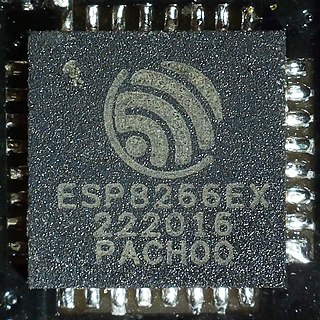
The ESP8266 is a low-cost Wi-Fi microcontroller, with built-in TCP/IP networking software, and microcontroller capability, produced by Espressif Systems in Shanghai, China.

Zephyr is a small real-time operating system (RTOS) for connected, resource-constrained and embedded devices supporting multiple architectures and released under the Apache License 2.0. Zephyr includes a kernel, and all components and libraries, device drivers, protocol stacks, file systems, and firmware updates, needed to develop full application software.

Apache Mynewt is a modular real-time operating system for connected Internet of things (IoT) devices that must operate for long times under power, memory, and storage constraints. It is free and open-source software incubating under the Apache Software Foundation, with source code distributed under the Apache License 2.0, a permissive license that is conducive to commercial adoption of open-source software.
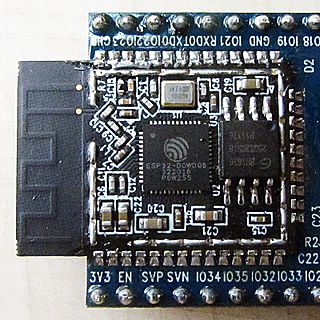
ESP32 is a series of low-cost, low-power system-on-chip microcontrollers with integrated Wi-Fi and dual-mode Bluetooth. The ESP32 series employs either a Tensilica Xtensa LX6 microprocessor in both dual-core and single-core variations, an Xtensa LX7 dual-core microprocessor, or a single-core RISC-V microprocessor and includes built-in antenna switches, RF balun, power amplifier, low-noise receive amplifier, filters, and power-management modules. Commonly found either on device specific PCBs or on a range of development boards with GPIO pins and various connectors depending on the model and manufacturer of the board.
ESP Easy is a free and open source MCU firmware for the Internet of things (IoT). and originally developed by the LetsControlIt.com community. It runs on ESP8266 Wi-Fi based MCU platforms for IoT from Espressif Systems. The name "ESP Easy," by default, refers to the firmware rather than the hardware on which it runs. At a low level, the ESP Easy firmware works the same as the NodeMCU firmware and also provides a very simple operating system on the ESP8266. The main difference between ESP Easy firmware and NodeMCU firmware is that the former is designed as a high-level toolbox that just works out-of-the-box for a pre-defined set of sensors and actuators. Users simply hook up and read/control over simple web requests without having to write any code at all themselves, including firmware upgrades using OTA updates.

Azure Sphere is an application platform with integrated communications and security features developed and managed by Microsoft for Internet Connected Devices.

Azure Linux, previously known as CBL-Mariner, is a free and open-source Linux distribution that Microsoft has developed. It is the base container OS for Microsoft Azure services and the graphical component of WSL 2.

FatFs is a lightweight software library for microcontrollers and embedded systems that implements FAT/exFAT file system support. Written on pure ANSI C, FatFs is platform-independent and easy to port on many hardware platforms such as 8051, PIC, AVR, ARM, Z80. FatFs is designed as thread-safe and is built into ChibiOS, RT-Thread, ErlendOS, and Zephyr real-time operating systems.
Tock is a free and open source embedded operating system for microcontrollers written in Rust. The operating system's goal is to isolate components so untrusted third-party applications can run on Cortex-M, RISC-V, and x86processors in a protected environment.











